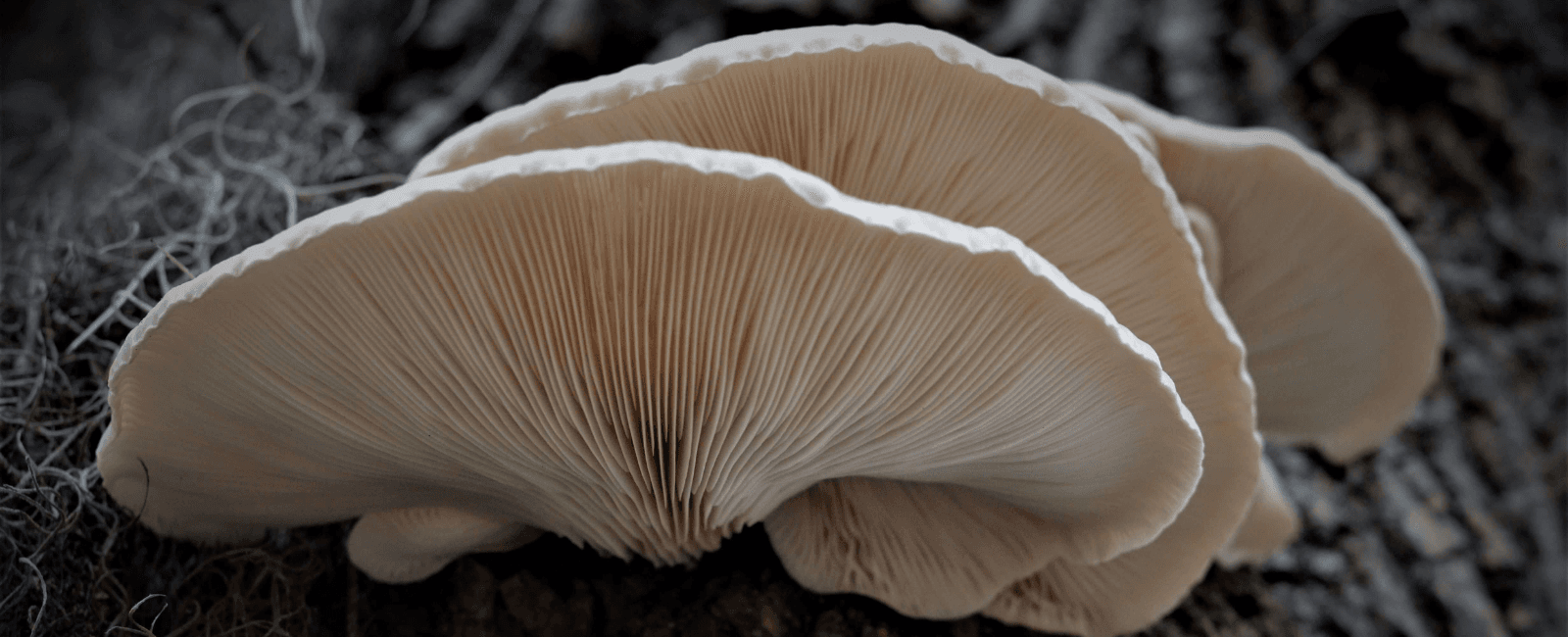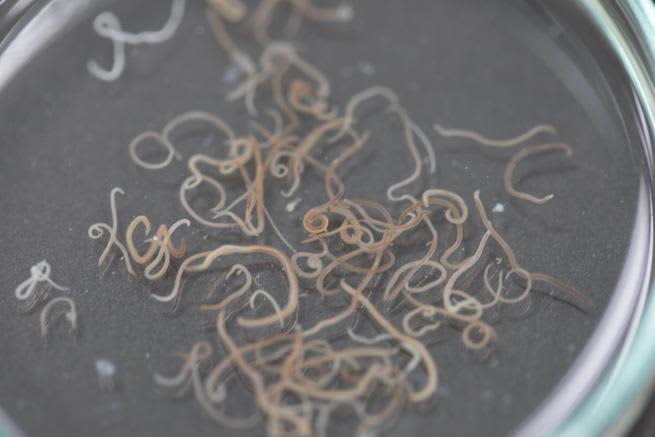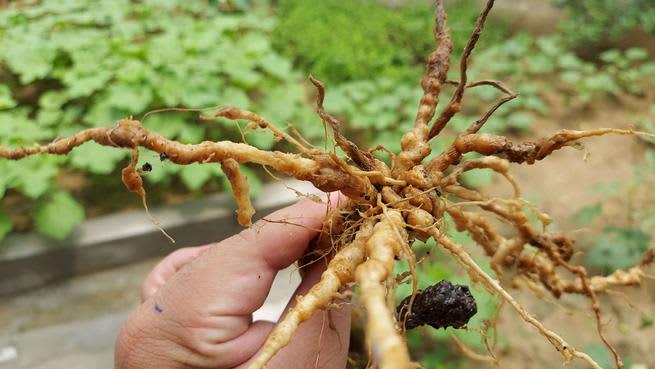

Oyster mushrooms (Pleurotus ostreatus) have been making their culinary debut, as many enjoy them for their meaty texture and mild flavor. These edible mushrooms can be commonly found in many moist woodlands and grocery stores, as they are an easy species of fungi to grow. However, it’s important to note that there are some inedible look-alikes.
True oyster mushrooms are recognizable by their white, brown, or grey caps, white flesh, and gills that cover the entire underside. Some say the mushroom smells like anise, while others swear by its seafoody scent. Regardless, these mushrooms are great fried, sauteed, or shredded into a vegan pulled pork replacement.
Just like we crave eating oyster mushrooms in our favorite recipes, not many people know that oyster mushrooms also have a unique dietary preference - they feed on worms.
Nematode killing machines

Nematodes, commonly known as roundworms (Caenorhabditis elegans), are parasitic worms that feed on fungi, bacteria, and even other microorganisms. As it turns out, oyster mushrooms love feasting on these little fellas. Although the mushrooms feed on decomposing wood, their typical diet usually lacks nitrogen. The carnivorous mushroom makes up for this deficiency by paralyzing and killing nitrogen-rich nematodes so that they can consume them.
Oyster mushrooms are not the only mushrooms that feed on nematodes. Some create constricting nooses to trap their prey, while others use sticky traps, but until recently, scientists could not pinpoint the exact method used by oyster mushrooms to kill their prey.
However, recent studies have found that the carnivorous fungi uses a special structure that releases toxins to kill nematodes. This toxin could have potential uses in agriculture due to its effectiveness as a natural nematicide.
The toxin in the carnivorous oyster mushroom

The scientific community has long since known the oyster mushroom’s carnivorous tendencies. Still, Dr. Yen-Ping Hsueh and colleagues at Academia Sinica in Taiwan have just figured out exactly how the mushroom catches its prey. In a study they posted in the Science Advances journal, the researchers located small globes called toxocysts found on the P. ostreatus hyphae.
The fungal hyphae are a part of the mycelium, which is responsible for absorbing nutrients and distributing them throughout the organism; however, the toxocysts serve another purpose. When nematodes come into contact with toxocysts, the globes explode and release a toxin called 3-octanone. This toxin leads to high concentrations of calcium ions in the pharynx and the head muscles of the nematodes, resulting in widespread cell death, including the death of nerve and muscle cells (1).
3-octanone is a relatively common toxin created by plants and fungi. It has the potential to be used in the future as a natural pesticide, though it cannot be directly obtained from oyster mushrooms. The toxin is volatile, meaning it immediately dissipates after it’s released. Scientists are still figuring out how to isolate the substance for agricultural needs.
Oyster mushroom’s potential use as a pesticide

Several crops, especially underground root vegetables, are susceptible to nematode infestation and must be treated with chemical pesticides to avoid the destruction of the harvest. These pesticides can harm our health, the soil, and the environment. Many pesticides are toxic beyond their targeted pests. Birds, fish, and beneficial insects can be harmed in the process. Additionally, pesticides can pollute water and damage healthy soil (2).
In an interview with New York Times, Dr. Hsueh notes that although toxocysts cannot be harvested, scientists can continue to study how they form and how 3-octanone functions as a toxin. Oyster mushrooms will not grow toxocysts in the presence of nitrogen-rich soil, which would make them useless in many fertilized plots of land. Nonetheless, more research will bring scientists one step closer to a breakthrough in natural pesticides.
Though being exposed to oyster mushroom toxins isn’t the most desirable outcome for the worms, it definitely beats other carnivorous plants and fungi. For instance, the Cordyceps fungus invades insects through airborne spores and takes over psychological function, turning its host into what we can best describe as a zombie.
Scientists are hoping that in the future, oyster mushrooms can be integrated into nitrogen-rich fields and produce their toxins, providing a natural solution to nematode infestation.
References
- Lee, Ching-Han, Yi-Yun Lee, Yu-Chu Chang, Wen-Li Pon, Sue-Ping Lee, Niaz Wali, Takehito Nakazawa, Yoichi Honda, Jiun-Jie Shie, and Yen-Ping Hsueh. 2023. “A Carnivorous Mushroom Paralyzes and Kills Nematodes via a Volatile Ketone.” Science Advances 9 (3). https://doi.org/10.1126/sciadv.ade4809.
- Aktar, Wasim, Dwaipayan Sengupta, and Ashim Chowdhury. 2009. “Impact of Pesticides Use in Agriculture: Their Benefits and Hazards.” Interdisciplinary Toxicology 2 (1): 1–12. https://doi.org/10.2478/v10102-009-0001-7.


